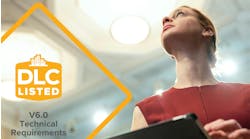This article is based on the 1999 National Electrical Code (NEC).
Installing transformers in accordance with the NEC is critical to ensuring a safe electrical installation as well as a reliable power supply system — especially for those applications where power quality is an issue. The installation of transformers is one of the most common, yet complicated installation practices that' causes considerable confusion when sizing overcurrent protection devices (OCPD) and bonding and grounding conductors.
Many electrical installations can be a challenge in terms of NEC requirements, and transformers can raise that challenge to a new level. A safe installation that's properly designed and installed will ensure that the conductors and equipment are properly sized and protected. In addition, grounding is also an overriding issue. Failure to properly install transformers can lead to fires from improper protection or conductor sizes, as well as electric shock from improper grounding, so let's look at how to do it right the first time.
| Check out this additional article on transformer installations: Step-by-Step Guide to Transformer Installations |
Let's assume you're installing a 45kVA and 112.5kVA, 480V delta primary to a 208/120V 3-phase wye secondary transformer in a new facility. Each transformer supplies a lighting and appliance branch-circuit panelboard with continuous nonlinear loads typically found in today's office buildings. The length of the conductors from the transformer secondary to the lighting and appliance branch-circuit panelboard is less than 10 ft, and all terminals are rated 75°C.
Step 1
First, determine the primary and secondary current rating of the transformers (see Fig. 1 and Fig. 2).
For a 45kVA transformer, the primary current would be 45,000VA ÷ (480 × 1.732) = 54A.
For the same transformer, the secondary current would be 45,000VA ÷ (208V × 1.732) = 125A.
For a 112.5kVA transformer, the primary current would be 112,500VA ÷ (480V × 1.732) = 135A, and for the same transformer, the secondary current would be 112,500VA ÷ (208V × 1.732) = 312A.
Step 2
Next, you must protect the primary winding of each transformer against overcurrent, in accordance with the percentages listed in Table 450.3(B) and all applicable notes. Where 125% of the primary current doesn't correspond to a standard rating of a fuse or nonadjustable circuit breaker as listed in 240.6(A), the next higher rating in Table 450.3(B) is acceptable (Note 1).
For a 45kVA transformer, 54A × 1.25 = 68A, so go to the next size up, which is 70A.
For a 112.5kVA transformer, 135A × 1.25 = 169A, so go to the next size up, which is 175A.
Step 3
Now you must size feeder conductors supplying continuous loads no smaller than 125% of the continuous loads based on the conductor ampacity values listed in Table 310.16 and before any ampacity adjustment, in accordance with the terminal temperature rating [110.14(C) and 215.2(A)(1)].
For a 45kVA transformer, 54A × 1.25 = 68A, so use a 4 AWG conductor rated 85A at 75°C, per Table 310.16.
For a 112.5kVA transformer, 135A × 1.25 = 169A, so use a 2/0 AWG conductor rated 175A at 75°C, per Table 310.16.
Size the equipment grounding (bonding) conductor for the transformer primary based on the size of primary protection device, per 250.122(A):
- 45kVA transformer — Per Table 250.122, 70A primary protection (Step 2) requires an 8 AWG copper conductor.
- 112.5kVA transformer — Per Table 250.122, 175A primary protection (Step 2) requires a 6 AWG copper conductor.
Step 4
You can run secondary conductors without secondary overcurrent protection at the point of supply for 10 ft if the secondary conductors have an ampacity greater than the rating of the termination device. This means the next-bigger-OCPD rule contained in 240.4(B) doesn't apply to this application.
Although secondary overcurrent protection isn't required in this situation, you're required to install overcurrent protection for lighting and appliance branch-circuit panelboards. You must locate this protection on the secondary side of the transformer, in accordance with 408.16(A) and (D). Where a feeder supplies continuous loads, the rating of the (secondary) overcurrent device may not be less than 125% of the continuous load (215.3) as listed in 240.6(A).
For a 45kVA transformer, 125A × 1.25 = 156A, so use a 175A protection device.
For a 112.5kVA transformer, 312A × 1.25 = 390A, so use a 400A protection device.
Since secondary overcurrent protection is provided in this example, the primary OCPD can be sized at as much as 250% of the primary current rating, in accordance with Table 450.3(B) and 240.21(B)(3).
Secondary conductors may not have an ampacity rating less than the rating of the OCPD at the termination of the conductors in accordance with Table 310.16 based on 75°C terminal rating [110.14(C)]. This means the next-size-up rule contained in 240.4(B) doesn't apply.
For a 45kVA transformer: 175A protection device = 2/0 AWG, rated 175A at 75°C.
For a 112.5kVA transformer: 400A OCPD = 600kcmil, rated 420A at 75°C.
But don't stop there. Where the number of current-carrying conductors in a raceway or cable exceeds three, the allowable ampacity shall be reduced in accordance with Table 310.15(B)(2)(a). For our examples, there are four current-carrying conductors on the secondary. The neutral is considered to be a current-carrying conductor, per 310.15(B)(4)(c), so you can reduce the ampacity by 20%. The conductor ampacity after adjustment and based on a 90°C ampacity rating [110.14(C)] must be no less than 175A for the 45kVA transformer and 400A for the 112.5kVA transformer.
For a 45kVA transformer, use 3/0 AWG, rated 225A × 0.80 = 180A, which is greater than the 175A protection device.
For a 112.5kVA transformer, use 700kcmil, rated 520 × 0.80 = 416A, which is greater than the 400A protection device.
Step 5
You must bond a transformer secondary that operates at more than 50V [250.20(A) and 250.112(I)] to an effective ground-fault current path to ensure dangerous voltage levels imposed by lightning, line surges, or unintentional contact with higher-voltage lines won't remain [250.2(A)(3)] on the system.
To provide the low-impedance path necessary to clear a ground fault on a separately derived system, you must bond the metal parts together (equipment grounding conductor) and connect them to the system ground conductor (X0 terminal). You must size the bonding jumper in accordance with Table 250.66, based on the total area of the largest ungrounded (hot) conductor as follows:
For a 45kVA transformer: 3/0 AWG secondary conductor = 4 AWG copper bonding jumper.
For a 112.5kVA transformer: 700kcmil secondary conductor = 2/0 AWG copper bonding jumper.
The neutral-to-case bond can be made at the source of a separately derived system or at the first system disconnecting means or OCPD. When there's no secondary side disconnecting means or overcurrent device(s), the neutral-to-case bond is made at the source of the separately derived system.
The neutral-to-case connection for a separately derived system can't be made at more than one location if it results in a parallel path for neutral current flow [250.30(A)(1), Exception No. 1]. Such multiple neutral current return paths to the grounded (neutral) conductor of the power supply can create fire and shock hazards, as well as power quality problems due to EMI [250.6 and 250.142(A)].
Grounding Electrode Conductor
You must size a grounding electrode conductor for a single separately derived system in accordance with 250.66, based on the total area of the largest secondary ungrounded (hot) conductor. This conductor shall connect the grounded conductor of the derived system to the grounding electrode as specified in 250.30(A)(4). The grounding electrode conductor must terminate at the same point on the separately derived system where the neutral-to-case bonding jumper is installed [250.30(A)(1)].
For a 45kVA transformer: 3/0 AWG = 4 AWG copper grounding electrode conductor.
For a 112.5kVA transformer: 700kcmil = 2/0 AWG copper grounding electrode conductor.
You must connect the grounding electrode conductor directly to the grounded neutral conductor terminal. It can't be terminated to the case of the transformer.
You must terminate the grounding electrode conductor to a grounding electrode that's located as close as practicable to, and preferably in the same area as the nearest effectively grounded metal member of the structure or effectively grounded metal water pipe within 5 ft from the point of entry into the building.
However, the grounding electrode conductor can terminate at any point on the water pipe system for industrial and commercial buildings where conditions of maintenance and supervision ensure only qualified persons service the installation, and the entire length of the interior metal water pipe used for the grounding electrode is exposed.
If an effectively grounded metal member of the building structure or an effectively grounded metal water pipe is not available, one of the following electrodes must be used:
- An electrode encased by at least 2 in. of concrete, located within and near the bottom of a concrete foundation or footing that's in direct contact with the earth, consisting of at least 20 ft of one or more bare, zinc-galvanized, or other electrically conductive coated steel reinforcing bars or rods of not less than ½ in. in diameter, or consisting of at least 20 ft of bare copper conductor not smaller than 4 AWG. See 250.52(A)(3).
- A ground ring encircling the building or structure, in direct contact with the earth, consisting of at least 20 ft of bare copper conductor not smaller than 2 AWG. See 250.52(A)(4).
- Rod or pipe electrodes not less than 8 ft in length. See 250.52(A)(5).
- A plate electrode that exposes not less than 2 sq ft of surface to exterior soil. See 250.52(A)(6).
- Other local metal underground systems or structures like piping systems and underground tanks. See 250.52(A)(7).
As you can see, installing transformers properly can be done in five steps, but sometimes it gets tricky. But as long as you follow the NEC rules outlined in this article, you should be fine.




